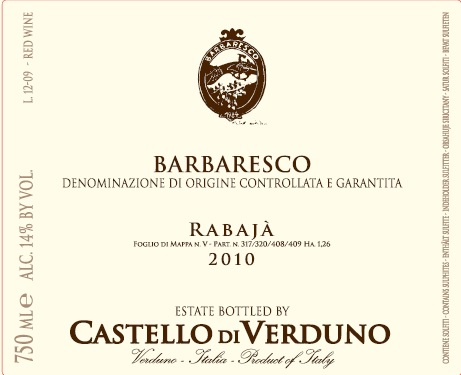2010 Barbaresco Red Blend
The Castello di Verduno Rabajà is an exquisite red blend hailing from the renowned Barbaresco region, expertly crafted in the celebrated vintage of 2010. In the glass, this wine unveils a deep, inviting red color that captivates the eye. On the palate, it showcases a full-bodied character complemented by a pronounced acidity that brings a delightful vibrancy to each sip. The tannins are firm yet elegant, providing structure and depth without overpowering the nuanced flavors. With its prominent fruit intensity, the wine bursts with luscious notes of dark cherries, blackberries, and a hint of earthy undertones, creating a harmonious balance that makes it utterly enjoyable. This wine is wonderfully dry, allowing the complex flavors to shine through, making it a perfect companion for rich meals or an enchanting evening on its own.
The Castello di Verduno Rabajà is an exquisite red blend hailing from the renowned Barbaresco region, expertly crafted in the celebrated vintage of 2010. In the glass, this wine unveils a deep, inviting red color that captivates the eye. On the palate, it showcases a full-bodied character complemented by a pronounced acidity that brings a delightful vibrancy to each sip. The tannins are firm yet elegant, providing structure and depth without overpowering the nuanced flavors. With its prominent fruit intensity, the wine bursts with luscious notes of dark cherries, blackberries, and a hint of earthy undertones, creating a harmonious balance that makes it utterly enjoyable. This wine is wonderfully dry, allowing the complex flavors to shine through, making it a perfect companion for rich meals or an enchanting evening on its own.




